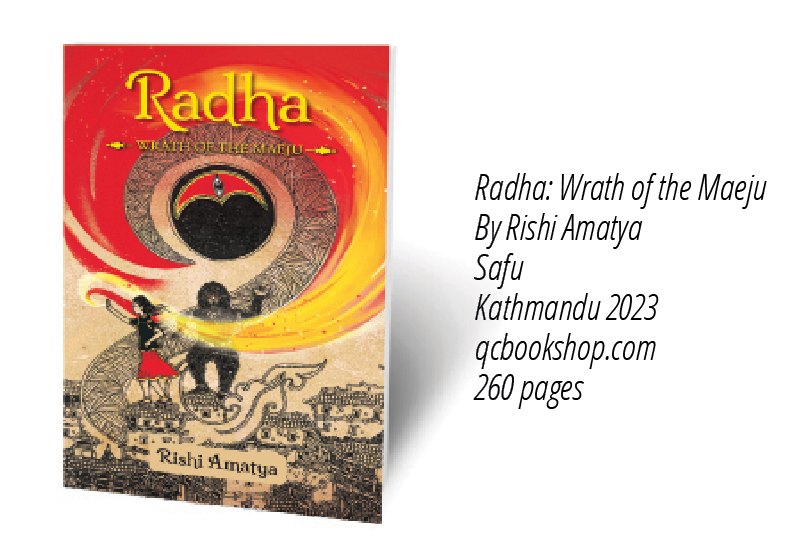Patan heritage in fantasy fiction
Cultural expert uses novel technique to reacquaint us with Kathmandu Valley civilisationRadha, a recently retired Kumari, is excited to explore Patan Darbar Square for the very first time as an ordinary girl. She has left behind the elaborate and time-consuming rituals that burdened her childhood as the living goddess of Patan.
Along with her uncle Pradip and brother Dhiraj, Radha spends a Saturday weaving in and out of the square, testing each other’s historical knowledge. Meanwhile, Amogh, a vengeful priest whose family suffered unjust displacement during the age of the Mallas, discreetly maneuvers around the square, scheming to regain his supernatural powers.
Just as Amogh spots the former Kumari and her family at the square, an earthquake hits Kathmandu Valley, and a series of strange things happen that threaten the balance of the realms. The new Kumari of Yala is yet to be chosen, but Radha must step up to protect earthly beings as is her divine duty.
The book opens with a compelling journey through the alleys of Patan, immersing the Nepali reader in tales of familiar structures and temples. It can actually be a good guide to the differences between Mul Chok and Sundari Chok, even to millennial Newas like me who do not know enough about our own people’s culture.
And as a researcher and cultural expert who has written interactive heritage maps of Patan Museum and Hanuman Dhoka, author Rishi Amatya is perfectly placed to weave the knowledge into this, his first novel.
The book is about a Kumari, one of the more mystical aspects of Kathmandu Valley civilisation, and the reader is taken along on the tour of Patan Darbar Square with the characters Radha, Dhiraj and Pradip. We are reintroduced to many of the structures, temples and motifs we have all grown up around, but perhaps did not know the stories behind them.
References to Kawas, Khyas, Black Curtains, Mha Puja and Kartik Dances also refer readers to the Valley’s intangible heritage, and shed light on questions we all had as children but stopped asking because we did not have access to answers.
The novel’s plot itself is gripping, the subject matter intriguing and the reader is kept on edge till the very end. Like most fantasy fiction, the storyline carries the book, peppering the reader with a few explanations of Nepal Bhasa words here and there. Amatya describes esoteric Newa traditions and rituals with just enough detail to keep the action moving.
The fusion of fantasy with Newa mysticism is a rare feat, especially in an English-language novel. Amatya has exceeded expectations, tastefully bringing mythical elements to life.
He had his work cut out since he has to introduce readers to the intricate world of Vajrayana concepts, even for those not familiar with this Buddhist system of beliefs. The narrative strikes a balance between humour and spookiness, making it a compelling page-turner. Warning: it can be a bit scary reading the book late into the night.
Young Newa women born and brought up in the Valley may find, like I did, that I needed this book, in this genre, in this language, to revive affinity for my identity. This may be true for many young Newas scattered around the globe who are distanced geographically from the beauty that is our heritage. We are not equipped with the language or even the stories to do our traditions and culture justice.
Amatya did that for me through Radha: Wrath of the Maeju. I was able to walk around Patan Darbar Square, a place I have been through a hundred times, with new found knowledge and pride. I have never felt seen in a fiction, let alone a fantasy. Now I do.

